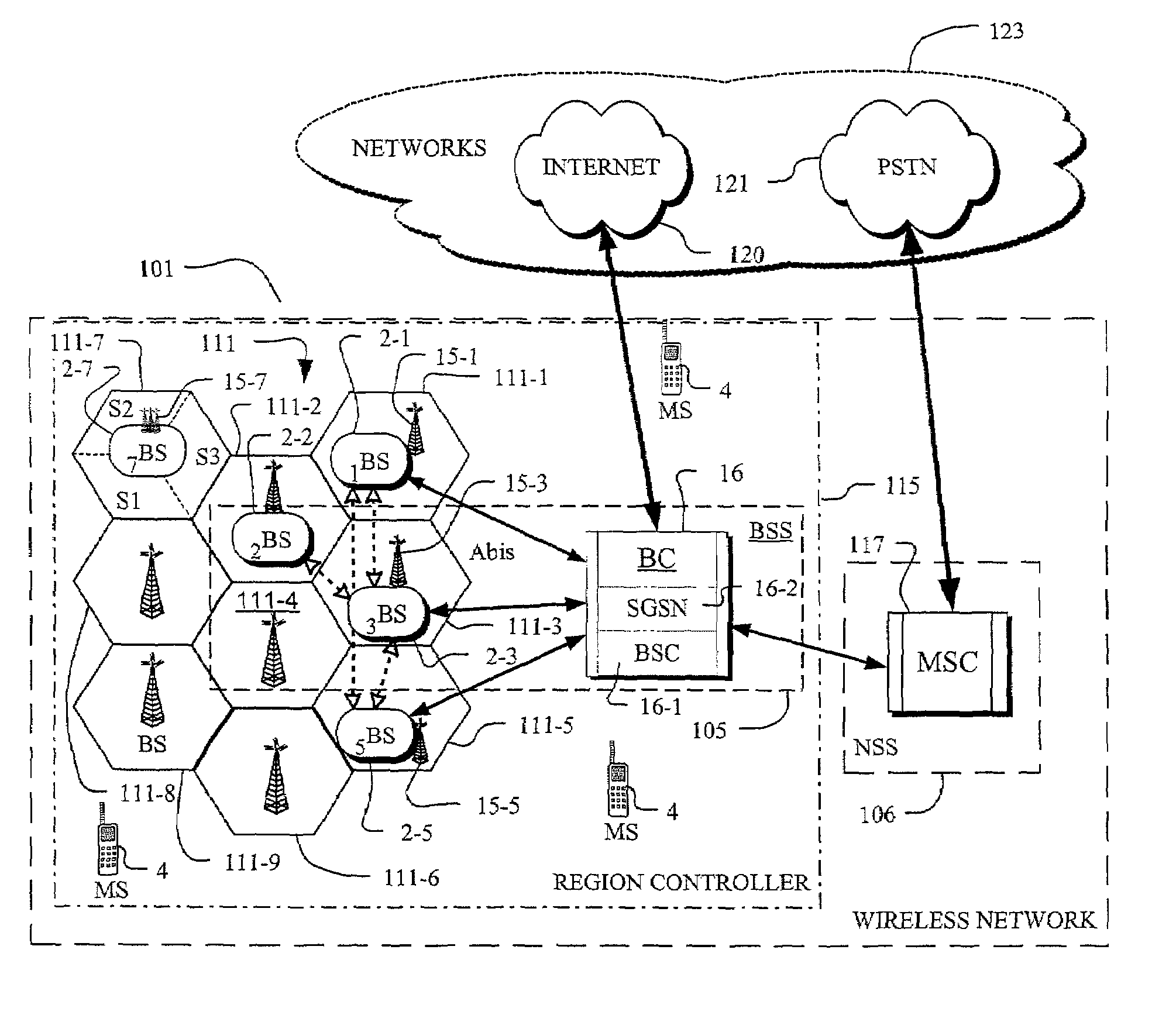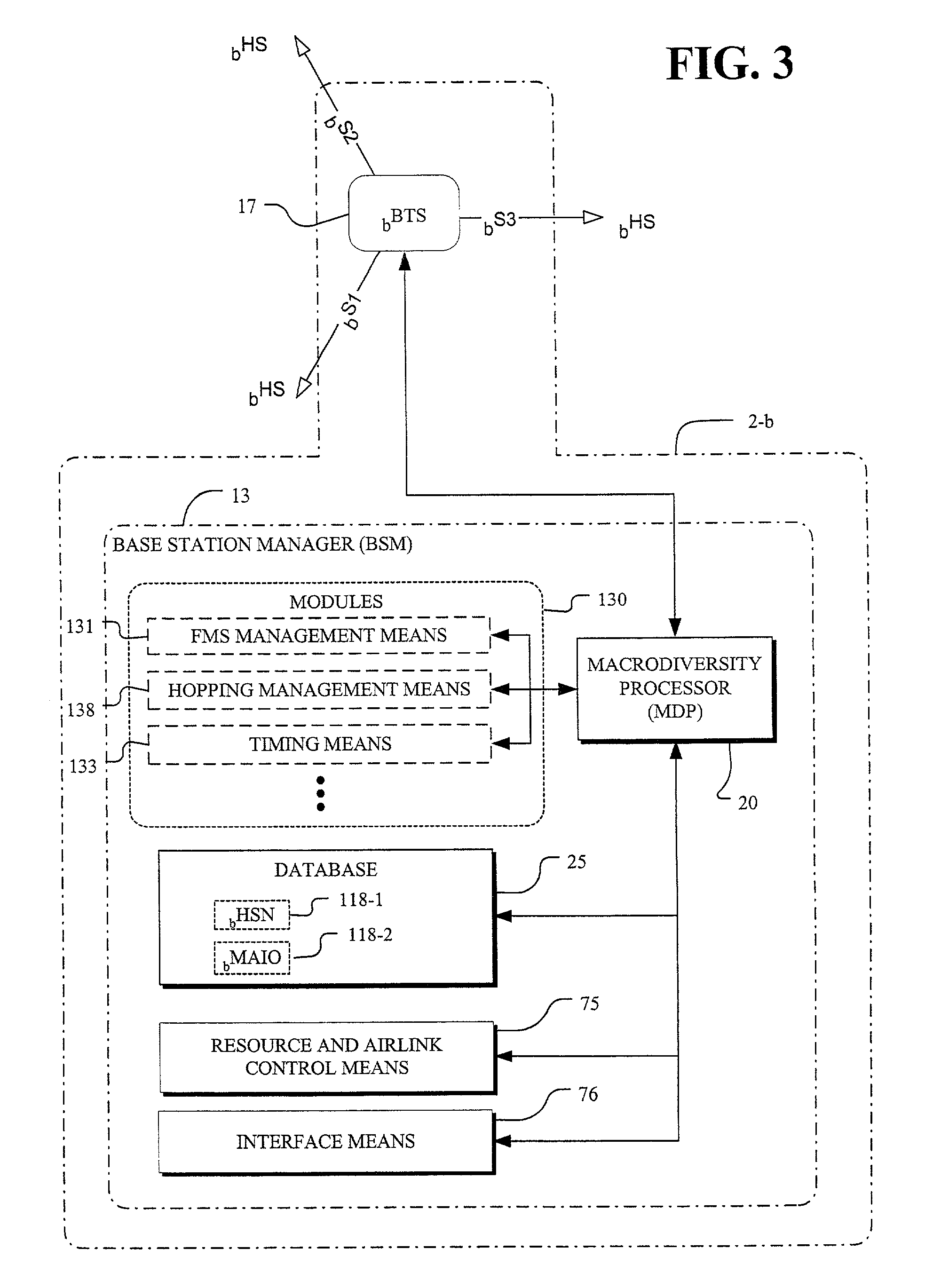Virtual cell mapping in macrodiverse wireless networks with frequency hopping
a wireless network and micro-diverse technology, applied in the field of virtual cell mapping, can solve the problems of weak local variation in path loss of ground-based radio links, spectrum efficiency but cannot be applied, and frequency hopping is limited to traffic channels, so as to minimize interference from adjacent sectors
- Summary
- Abstract
- Description
- Claims
- Application Information
AI Technical Summary
Benefits of technology
Problems solved by technology
Method used
Image
Examples
Embodiment Construction
[0045]FIG. 1 depicts a mobile wireless network 101 including base stations 2 that have downlinks and uplinks to a base controller 16. These links are typically cabled links such as T1 / E1 lines. The base controller 16 is formed of a base station controller (BSC) 16-1 and a Serving GPRS Support Node (SGSN) 16-2. The BSC 16-1 controls the assignment of the radio link resources and the operation of the network and has an interface, through the mobile switching center (MSC) 117, with the Public Switched Telephone Network (PSTN) 121 of networks 123. The SGSN 16-2 is primarily responsible for mobility management in GPRS and detects mobile stations in the local area for the transmission and receipt of packets. Additionally, it locates and identifies the status of mobile stations and gathers crucial call information. The SGSN operates with standard network interfaces and capabilities for the transport of IP using Frame Relay and ATM over physical interfaces.
[0046]FIG. 1, the base controller ...
PUM
 Login to View More
Login to View More Abstract
Description
Claims
Application Information
 Login to View More
Login to View More - R&D
- Intellectual Property
- Life Sciences
- Materials
- Tech Scout
- Unparalleled Data Quality
- Higher Quality Content
- 60% Fewer Hallucinations
Browse by: Latest US Patents, China's latest patents, Technical Efficacy Thesaurus, Application Domain, Technology Topic, Popular Technical Reports.
© 2025 PatSnap. All rights reserved.Legal|Privacy policy|Modern Slavery Act Transparency Statement|Sitemap|About US| Contact US: help@patsnap.com



